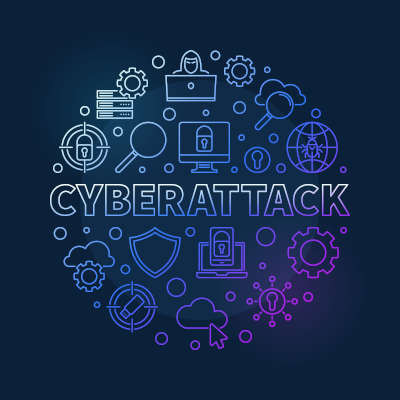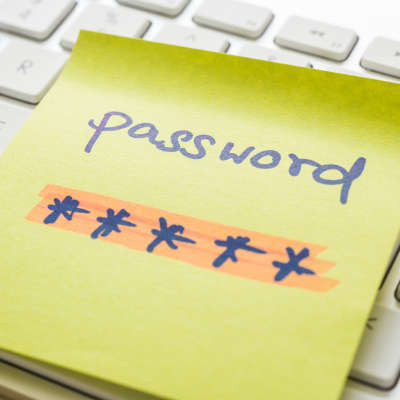Email is a crucial part of any modern business, but it’s not always the most fun topic to cover. It’s more of a necessity than something super exciting, like machine learning or automation. Still, this does not make it any less important, so why don’t we discuss some of the ways you can make sure your organization’s email server is as secure as possible?
BNMC Blog
IT solutions have the potential to be major problem-solvers for your organization, but they are only as effective as the team members using them. This means that all employees must not only be trained on the solutions, but also must embrace them as the efficient solutions they are. Here are some ways that you can train your employees to make sure that your team is efficiently using new technology solutions.
The ransomware attack against Kaseya’s VSA servers for approximately 1,500 organizations was yet another major challenge for businesses to overcome, and while most of the affected companies did not give in to the hackers’ demands, others felt forced to pay the ransom. The problem, however, is that some of those who did pay the ransom are now having trouble decrypting their data, and with REvil MIA, they do not have the support needed to decrypt their data.
While there are plenty of ways for a business to secure its resources, there are just as many ways for your employees to undermine these protections… often without even realizing that they’re doing so. Let’s focus on some of the cognitive biases that you and your team members might experience when it comes to your security.
It seems like there is a new data breach every time we turn around, and in most cases, these breaches expose the personal data of many people. The most recent breach in this troubling trend is for the popular social media website LinkedIn. This breach exposed 700 million profiles, an event which led them to be sold on a popular hackers forum. The scary part? LinkedIn denies that there was any data breach.
New technology solutions are not always easy to implement, and the cloud in particular opens up a ton of opportunities for both great successes and agonizing failures. If you do not take certain issues seriously during your cloud implementation process, you might find yourself on the wrong end of this spectrum. Let’s examine some of the common pitfalls that some businesses encounter when it comes to implementing cloud solutions.
At this stage, you don’t need us to tell you that ransomware is bad. This threat has gone from being an emerging problem to one that is now sensationalized and commonplace in headlines and news stories around the world. According to a recent study, even organizations that do pay the ransom when they get infected by this threat are playing with fire.
The 2020 hack of SolarWinds saw a major disruption of the supply chain for many organizations around the world, including the U.S. government, but a recent survey shows that these organizations have felt varying degrees of effects from the hack itself. Furthermore, many have taken the hack as evidence that further information sharing must occur if we are to ever take the fight to cyberthreats.
Would you believe us if we told you that the maps we have grown up looking at are remarkably skewed? That pull-down map in the front of every elementary school classroom probably wasn’t to scale, for one reason or another. Modern technology can make it possible for hackers to skew satellite imaging, and this could very well be used in the cybercrime avenue in the future. The developing technology of deepfake images could bring about a whole new type of threat.
Here’s the thing: even if your password policy is airtight and perfectly followed, relying on passwords alone isn’t enough anymore to secure your business. Some of today’s threats are just too capable of cracking them. In order to really preserve your business’ security, most security professionals (like us) recommend implementing two-factor authentication—however, it pays off to consider your options, and how much (if any) added security each has to offer.
Data is one of—if not the—most essential resources a business has, which means it is essential that you take the steps to protect it in every way possible from every potential threat. This includes those that could originate from within your own organization. Let’s consider the case of Xiaorong You, who was recently convicted of conspiracy to commit trade secret theft by a federal jury.
For a considerably long time—over 40 years—Apple has staked the claim that their devices are pretty much hack-proof, that most hackers wouldn’t even try breaking into their security measures. Law enforcement was so repeatedly rebuffed by the company as they sought workarounds to get into their devices, that these law enforcement agencies figured it out for themselves.
In doing so, they uncovered a few things that even the most ardent Apple fans may be surprised to hear.
When most of us think of cybercrime, we’re thinking about a lone hacker in a dimly lit room—or, at most, a few hackers hunched over their computers in a dimly lit room. However, to remain restricted to this impression would be inaccurate—particularly when you consider the very real threat that state-sponsored cyberattacks can just as easily pose.
Most businesses fall under some type of regulation that demands compliance. This will be especially true as data privacy concerns turn into further regulations. Most of today’s compliance standards are centered around data security, so you’d figure that if a company is compliant with the regulations their operations fall under, that would mean their business is secure. Unfortunately, the two terms aren’t always synonymous. Today, we will discuss the difference between security and compliance.
Preserving cybersecurity requires the person responsible for doing so to consider every component and connection associated with their technology, down to the smallest minutiae. Let’s consider a sizable example that comes from a narrowly avoided disaster in the Democratic Republic of Congo, that could have potentially left millions of Internet users exposed to serious threats.
There are dozens of Internet browsers on the market. They are typically all free and when they come stock, are pretty much all the same. Most of the most popular ones come with an app store where users can download useful apps to make their experience better. Unfortunately, there are times that malicious code gets in there. Security firm Avast recently found 28 third-party extensions that are extraordinarily popular that had malicious code found in them.
It’s 2021! We made it!
A lot of us look at a new year as an opportunity to greatly improve our lives. Maybe your resolution is to hit the gym regularly or commit to fewer processed foods—regardless, there are endeavours that take serious commitment, and others that take just a few minutes to accomplish. A really simple, really beneficial task you should add to your 2021 to-do list is to lock down some of your most important online accounts—and we’re going to walk you through it.
When was the last time you intentionally and systematically changed your passwords?
It’s a good practice, even though it can be a huge pain. For many of us, Google is a huge central hub that is tied to a lot of our data. With all of the cybersecurity issues and data breaches, it’s just a good idea to keep your Google account in check.
2020 has brought us a lot of news that we’d rather not hear. Just days before the end of what may be regarded as one of the worst years on record, there is more. One of the largest hacks in the history of the Internet happened earlier this year and more is being learned about it each day. Today, we will tell you what we know, who it affected, and what your business needs to do to secure itself.






















